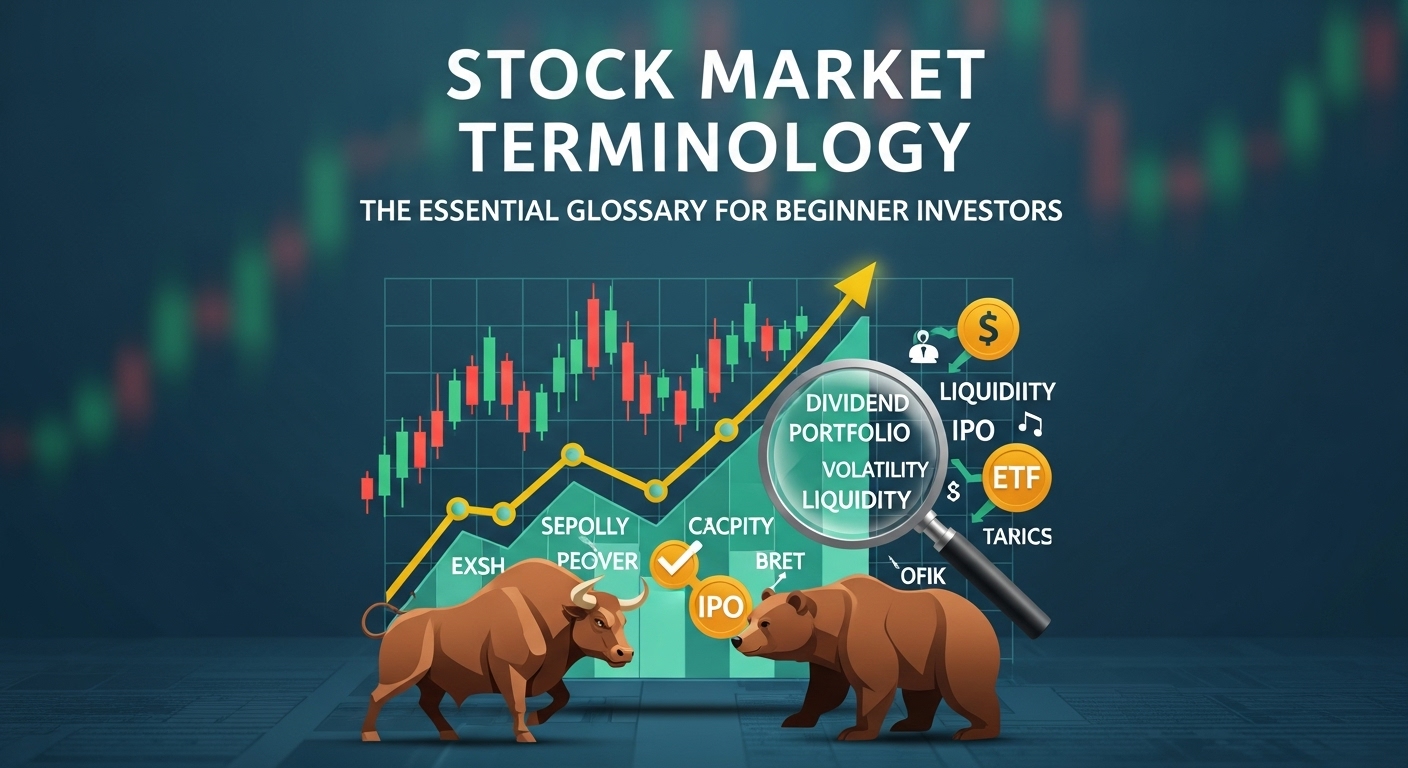Ever tried to follow a Stock Market Terminology news report only to get lost in a jungle of jargon? You’re not alone. The world of stocks and investing often feels like it has its own language—one full of bulls, bears, and confusing acronyms.
However, here’s the secret: beneath the technical language, the core concepts are surprisingly straightforward. Learning these essential terms is like finding a hidden key: it unlocks your ability to read, understand, and ultimately participate in the market with confidence.
Ready to move beyond the confusion? Therefore, let’s break down the must-know terms you need to start your investing journey on solid ground.
🏛️ Foundational Concepts: The Building Blocks
First, before you place your first trade, you must understand the very things you’ll be buying and trading.
1. Stock / Share / Equity
At its simplest, a stock (or share or equity) represents a tiny piece of ownership in a company. In other words, when you buy a share, you become a part-owner, and you are entitled to a portion of the company’s earnings and assets.
2. Stock Exchange
Think of this as the marketplace where buyers and sellers meet. Major exchanges, for instance, the NYSE (New York Stock Exchange) and NASDAQ, provide the platform for trading these shares.
3. IPO (Initial Public Offering)
This is a company’s debut on the stock market. An IPO is the very first time a private company sells shares of its stock to the general public, moving from private ownership to being publicly traded.
4. Market Capitalization (Market Cap)
This term tells you the total value of a company. Specifically, analysts calculate it by multiplying the current price of a single share by the total number of shares the company has outstanding. Companies are often classified by their Market Cap (e.g., Large-Cap, Mid-Cap, Small-Cap).
🐂 Market Trends: Knowing the Sentiment
The market’s overall mood is described using two very famous—and often aggressive—animals.
5. Bull Market
A Bull Market is a prolonged period where stock prices in the overall market are generally rising. Consequently, this is characterized by investor optimism, confidence, and a strong economy. A “bullish” investor believes prices will go up.
6. Bear Market
The Bear Market is the opposite of the bull. This is a prolonged period where stock prices in the overall market are generally falling. Meanwhile, pessimism, fear, and an expectation of poor economic performance drive this sentiment. A “bearish” investor believes prices will go down.
7. Volatility
This measures how quickly and drastically a stock’s price moves up or down. A stock with high volatility will show large, rapid price swings, whereas one with low volatility will have more stable, predictable movements.
💸 Trading & Investment Mechanics
These are the operational terms that describe how you buy, sell, and profit.
8. Bid and Ask Price
-
Bid Price: The highest price a buyer is currently willing to pay for a stock.
- Ask Price: The lowest price a seller is currently willing to accept for a stock.
The difference between the two is the Bid-Ask Spread, which means it’s essentially a measure of liquidity.
9. Dividend
When a company generates a profit, it sometimes chooses to distribute a portion of that profit directly to its shareholders. Investors call this cash payment a dividend. Therefore, it’s a way for investors to earn income just for holding the stock.
10. Broker
A broker (or brokerage firm) is the intermediary that executes your buy and sell orders. This is the platform (like an online app) you use to access the stock exchange.
11. Diversification
This is the golden rule of investing! Diversification means spreading your investments across various assets (different stocks, bonds, real estate, etc.) to reduce your overall risk. In short, the idea is simple: don’t put all your eggs in one basket.
📊 Valuation Metrics: What’s a Stock Worth?
To analyze if a stock is a good buy, investors look at specific ratios and indicators.
12. P/E Ratio (Price-to-Earnings Ratio)
The P/E Ratio is one of the most common valuation metrics. Analysts calculate it by dividing the stock’s current market price by its Earnings Per Share (EPS). Put simply, it tells you how much investors are willing to pay for every dollar of a company’s earnings. A high P/E ratio might suggest investors expect high future growth.
13. EPS (Earnings Per Share)
This is a company’s net profit divided by the number of outstanding shares. Furthermore, EPS is a key indicator of a company’s profitability and analysts often use it to judge financial health.
14. Volume
Volume refers to the total number of shares that investors trade for a specific stock during a particular period, usually a day. Ultimately, high volume indicates strong interest and high liquidity in the stock.
🔑 Your Takeaway
Investing doesn’t require a finance degree, but it does require a working vocabulary. By mastering these key terms, you’ll not only be able to read financial news but also start to understand the forces that drive the market. Consequently, this knowledge empowers you to make informed, rational decisions, rather than emotional ones.

